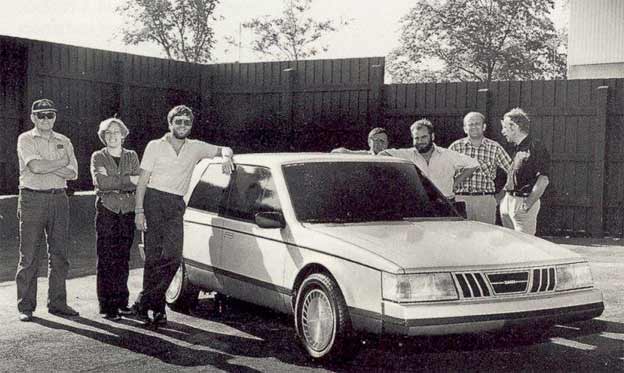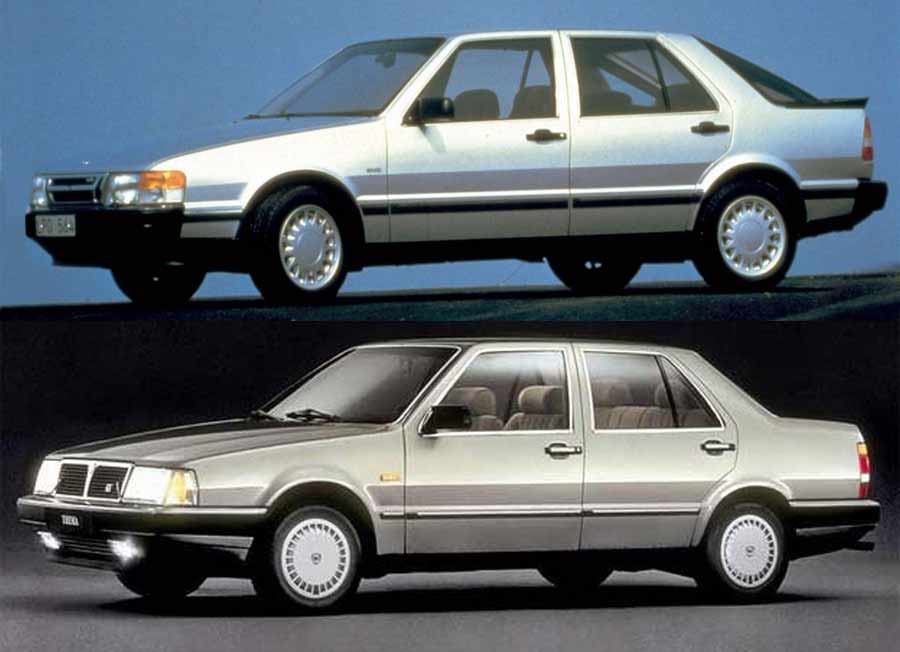After years of honing the 900 models and expanding them in every way feasible, Saab has topped them with a rival for Audi 100/200, various BMWs, Rovers, and some Mercedes models. It was the time from the end of the ’80s of the last century when it was time to revise the positions of car manufacturers from a higher class. It was then that the Saab 9000 appeared, to find its place in this niche market.
Its triumph doesn’t come from mechanical ingenuity, the Cd, the performance, or the economy, but from the quality of the package. That’s how we got the car that is 120mm shorter than the 900 it supplements, 29mm wider and almost the same height, yet offers a level of accommodation totally out of proportion to its external dimensions.

There is a vast amount of space within the cabin and when a six-footer stretches out in the front another six-footer can do the same in the rear without his knees touching the seat, his head touching the roof or his back feeling as though its seat design was skimped. Furthermore, the rear seat has ample width and elbow room to accept a trio of beefy adults.
Saab 9000 MotorWeek Review (1991)
A really revolutionary change, with the then rather modest Saab car in terms of spaciousness. This is exactly what the retro review of MotorWeek magazine from the distant 1991 speaks about. years which you can see below:
In 1991, when this review was done, the Saab 9000 was somewhere in the middle of its lifespan. Just enough for Saab to eliminate all the shortcomings noticed since the introduction of the model on the market in 1984-85 and to mature as a complete car from a higher class.
When Saab 9000 goes on sale in the global market, rival makers will have to face up to the fact that they got their sums wrong in this department at least, and that the Saab was the new accommodation yardstick.
As a result of all this, Saab was in imminent danger of becoming a very serious motor manufacturer. The 9000 series, its first new model for 17 years and borne of that unlikely relationship with Fiat-Lancia, has put it in the grim position of challenging formidable rivals in one of the most competitive and risky segments of the market.
Type Four platform
Saab always very honestly said that it could not afford to tackle a new model without collaborating with another company (isn’t that what all car companies do today). Because of long-standing Nordic area marketing arrangements with Fiat-Lancia, the latter were logical partners. The odd thing was that parts manufacturing commonality were limited to just 5 pressings in the front of the cars. Italdesing’s Giugiaro created the basic designs for both Saab and Lancia, the fundamental difference between the 9000 and Lancia’s Thema being that the former was a hatchback, while the latter was a three-box.

Saab talks about “collaboration” but says it was many years ago. Lancia, at this stage, doesn’t’ admit even to that in its very brief statement on then Thema model. The fact was, however, as these two photos clearly indicate, that Saab 9000 and the Lancia Thema are closely related and share more than just similar dimensions (the Saab is a mere 20mm longer) and some underbody components.
If that cockpit and those doors are not interchangeable, then they are so close that they should be. Yes, this model version Saab does have a rear hatchback door and huge glass area, while the Thema was conventional, but the Saab also had this version. The Saab and Lancia versions were just the beginning for this Type Four platform – Fiat’s name for the co/operative project that involved Fiat, Saab, Lancia, and Alfa Romeo. At that time, Saab was first to go public and show off the car but Lancia stole its thunder and released a photograph of the Thema only days before Saab launched the car in Sweden.











